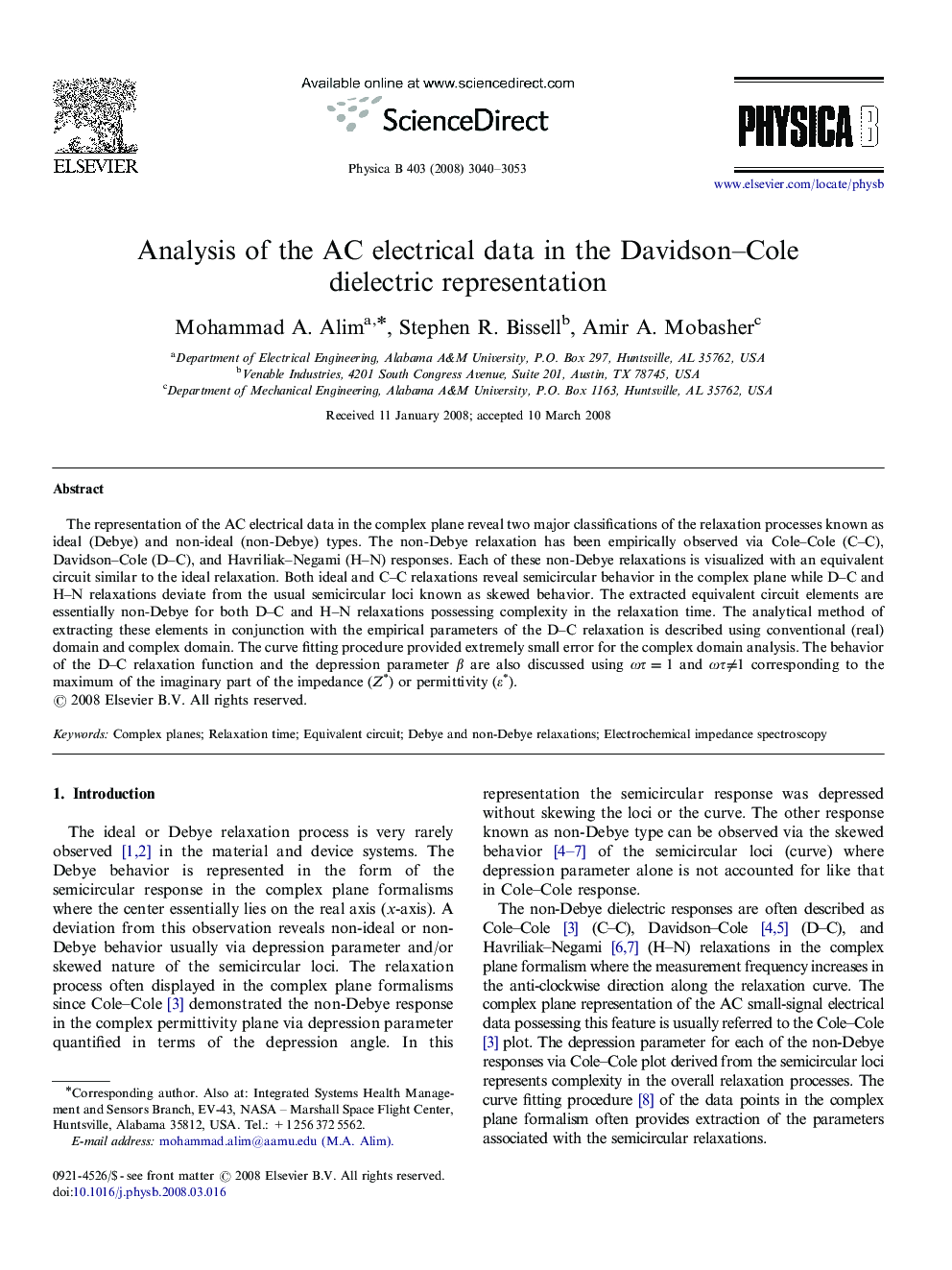| Article ID | Journal | Published Year | Pages | File Type |
|---|---|---|---|---|
| 1814205 | Physica B: Condensed Matter | 2008 | 14 Pages |
The representation of the AC electrical data in the complex plane reveal two major classifications of the relaxation processes known as ideal (Debye) and non-ideal (non-Debye) types. The non-Debye relaxation has been empirically observed via Cole–Cole (C–C), Davidson–Cole (D–C), and Havriliak–Negami (H–N) responses. Each of these non-Debye relaxations is visualized with an equivalent circuit similar to the ideal relaxation. Both ideal and C–C relaxations reveal semicircular behavior in the complex plane while D–C and H–N relaxations deviate from the usual semicircular loci known as skewed behavior. The extracted equivalent circuit elements are essentially non-Debye for both D–C and H–N relaxations possessing complexity in the relaxation time. The analytical method of extracting these elements in conjunction with the empirical parameters of the D–C relaxation is described using conventional (real) domain and complex domain. The curve fitting procedure provided extremely small error for the complex domain analysis. The behavior of the D–C relaxation function and the depression parameter β are also discussed using ωτ=1 and ωτ≠1 corresponding to the maximum of the imaginary part of the impedance (Z*) or permittivity (ε*).
